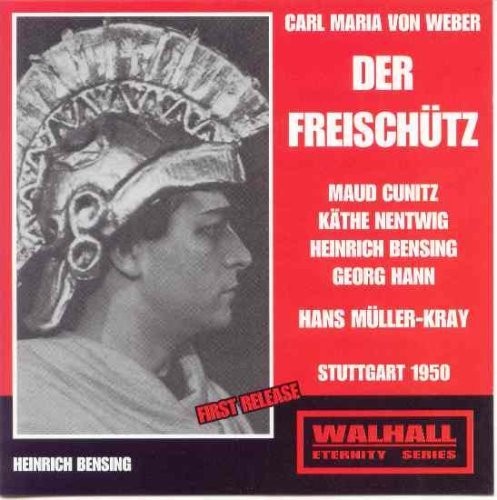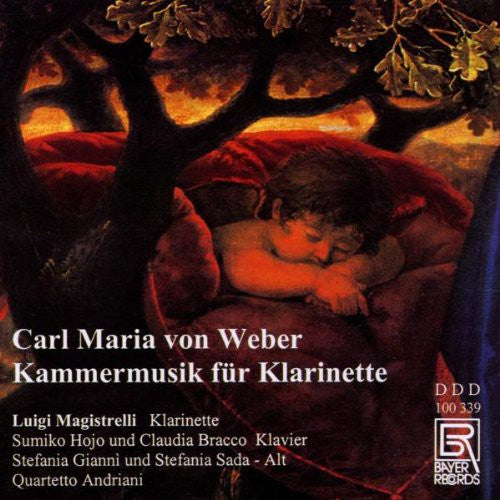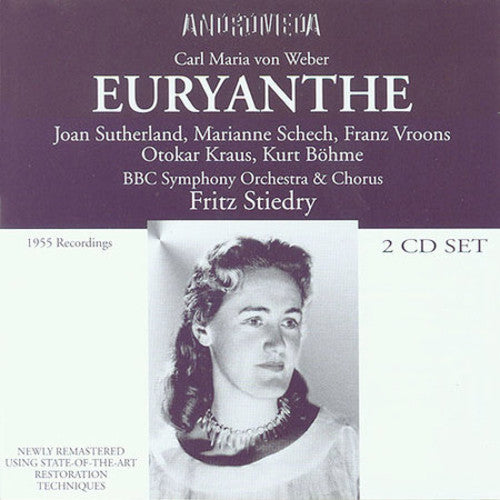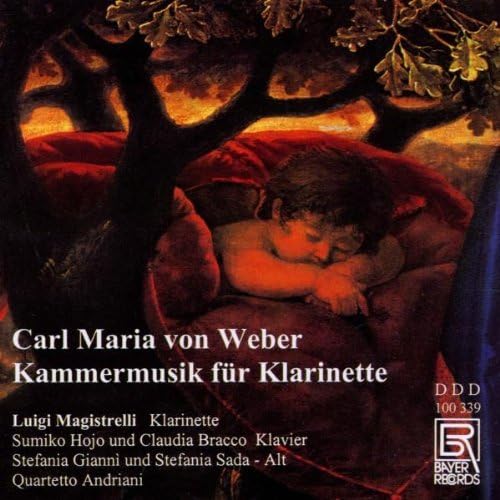Carl Maria von Weber
95 products
-
 {# optional: put hover video/second image here positioned absolute; inset:0 #}
{# optional: put hover video/second image here positioned absolute; inset:0 #}
-
 {# optional: put hover video/second image here positioned absolute; inset:0 #}
Marco Polo
{# optional: put hover video/second image here positioned absolute; inset:0 #}
Marco PoloVon Winter: Maometto / Bellini, Na, De Gobb, Ruta, Et Al
Talk about politically incorrect! This opera, based on a play by Voltaire and first presented at La Scala in 1817, presents the...
-
 {# optional: put hover video/second image here positioned absolute; inset:0 #}
{# optional: put hover video/second image here positioned absolute; inset:0 #}
-
 {# optional: put hover video/second image here positioned absolute; inset:0 #}
{# optional: put hover video/second image here positioned absolute; inset:0 #}
-
 {# optional: put hover video/second image here positioned absolute; inset:0 #}
{# optional: put hover video/second image here positioned absolute; inset:0 #}
-
 {# optional: put hover video/second image here positioned absolute; inset:0 #}
{# optional: put hover video/second image here positioned absolute; inset:0 #}
-
 {# optional: put hover video/second image here positioned absolute; inset:0 #}
{# optional: put hover video/second image here positioned absolute; inset:0 #}
-
 {# optional: put hover video/second image here positioned absolute; inset:0 #}
{# optional: put hover video/second image here positioned absolute; inset:0 #}
-
 {# optional: put hover video/second image here positioned absolute; inset:0 #}
{# optional: put hover video/second image here positioned absolute; inset:0 #}
-
 {# optional: put hover video/second image here positioned absolute; inset:0 #}
{# optional: put hover video/second image here positioned absolute; inset:0 #}
-
 {# optional: put hover video/second image here positioned absolute; inset:0 #}
{# optional: put hover video/second image here positioned absolute; inset:0 #}
-
 {# optional: put hover video/second image here positioned absolute; inset:0 #}
BIS
{# optional: put hover video/second image here positioned absolute; inset:0 #}
BISWeber: Clarinet Concertos, Quintet / Fröst, Kantorow
This is a hybrid Super Audio CD playable on both regular and Super Audio CD players. This is an absolutely wonderful disc...
-
 {# optional: put hover video/second image here positioned absolute; inset:0 #}
BIS
{# optional: put hover video/second image here positioned absolute; inset:0 #}
BISWeber: Symphonies, Bassoon Concerto / Luoma, Kantorow
This is a hybrid Super Audio CD playable on both regular and Super Audio CD players. 3323410.az_WEBER_Symphonies_1_2.html WEBER Symphonies: No. 1; No....
-
 {# optional: put hover video/second image here positioned absolute; inset:0 #}
BIS
{# optional: put hover video/second image here positioned absolute; inset:0 #}
BISWeber: Overtures / Kantorow, Tapiola Sinfonietta
Although celebrated as the father of German Romantic opera, Carl Maria von Weber is today generally known for one opera alone: Der...
-
 {# optional: put hover video/second image here positioned absolute; inset:0 #}
On SaleNaxos AudioVisual
{# optional: put hover video/second image here positioned absolute; inset:0 #}
On SaleNaxos AudioVisualWeber: Der Freischutz / Chung, Teatro alla Scala
Also available on Blu-ray Weber was at the forefront of the rise of German Romantic opera and sought to dethrone Rossini from...




 {# optional: put hover video/second image here positioned absolute; inset:0 #}
{# optional: put hover video/second image here positioned absolute; inset:0 #}

 {# optional: put hover video/second image here positioned absolute; inset:0 #}
{# optional: put hover video/second image here positioned absolute; inset:0 #}

 {# optional: put hover video/second image here positioned absolute; inset:0 #}
{# optional: put hover video/second image here positioned absolute; inset:0 #}


 {# optional: put hover video/second image here positioned absolute; inset:0 #}
{# optional: put hover video/second image here positioned absolute; inset:0 #}

 {# optional: put hover video/second image here positioned absolute; inset:0 #}
{# optional: put hover video/second image here positioned absolute; inset:0 #}


 {# optional: put hover video/second image here positioned absolute; inset:0 #}
{# optional: put hover video/second image here positioned absolute; inset:0 #}

 {# optional: put hover video/second image here positioned absolute; inset:0 #}
{# optional: put hover video/second image here positioned absolute; inset:0 #}

 {# optional: put hover video/second image here positioned absolute; inset:0 #}
{# optional: put hover video/second image here positioned absolute; inset:0 #}

 {# optional: put hover video/second image here positioned absolute; inset:0 #}
{# optional: put hover video/second image here positioned absolute; inset:0 #}

 {# optional: put hover video/second image here positioned absolute; inset:0 #}
{# optional: put hover video/second image here positioned absolute; inset:0 #}

 {# optional: put hover video/second image here positioned absolute; inset:0 #}
{# optional: put hover video/second image here positioned absolute; inset:0 #}


 {# optional: put hover video/second image here positioned absolute; inset:0 #}
{# optional: put hover video/second image here positioned absolute; inset:0 #}

 {# optional: put hover video/second image here positioned absolute; inset:0 #}
{# optional: put hover video/second image here positioned absolute; inset:0 #}

 {# optional: put hover video/second image here positioned absolute; inset:0 #}
{# optional: put hover video/second image here positioned absolute; inset:0 #}


 {# optional: put hover video/second image here positioned absolute; inset:0 #}
{# optional: put hover video/second image here positioned absolute; inset:0 #}